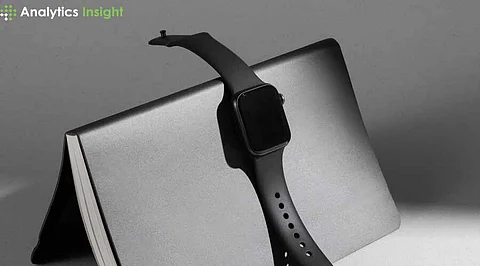

By March 11, 2025, Apple's previously iron-fisted hold on the smartwatch market began to slip. The Apple Watch, the longtime gold standard of wrist technology, is under increasing pressure from competitors and changing consumer behavior. Late 2024 data shows Huawei passing Apple in worldwide shipments, with a 44.3% growth increase to Apple's 12.8% loss. In India, a 30% market decline in 2024 highlights overall challenges. The article delves into the factors behind Apple's waning supremacy, divided under sub-headings that identify significant forces at work.
A seismic shift is evident in Huawei's rise to the top in Q3 2024, when it shipped 23.6 million units compared to Apple's 22.5 million. Innovation that competes with Apple's offerings is highlighted by models like the Huawei Watch D2, which features medically certified blood pressure monitoring. With its low-cost Smart Band 9 and Watch S4 picking up, Xiaomi also zooms with a growth rate of 26.5%. They undercut Apple's prices, typically Rs 79,900 for a Series 10, without sacrificing high-end health features and battery life.
With its Galaxy Watch 7 and Ultra, Samsung joins the battle, accounting for 24.3 percent of shipments. This competitive barrage chokes Apple's 21% global share, once as much as 36.1% in 2022, as competitors grab price-conscious and feature-demanding customers.
Apple's pace of innovation has slowed, blunting its competitive advantage. The Series 10, which appeared in 2024, enhances sleep monitoring and introduces a thinner design but misses innovations such as blood oxygen monitoring, which is still prohibited in the U.S. because of a Masimo patent conflict. Counterpoint Research documents a 19% 2024 shipment decline, attributable to weaker upgrade cycles among iPhone users. The Ultra 2’s 36-hour battery life pales against Garmin’s 56-day solar-powered models or Huawei’s two-week spans.
Consumers facing incremental updates rather than game-changers hesitate to replace older watches like the Series 8, which still run WatchOS 11 competently. In India, a 30% shipment drop in 2024 indicates a cooling mania among first-time consumers, according to The Times of India. Fundamental smartwatch demand slows as consumers look for sophisticated health features, ECG, and stress monitoring, which Apple provides but no longer dominates. Saturation and changing demands place Apple at the risk category where growth initially seemed limitless.
At Rs 79,900 for the Series 10 or Rs 94,900 for the Ultra 2, Apple’s pricing towers over competitors. Huawei’s Watch GT 5, at roughly Rs 25,000, delivers comparable health tracking and better battery life. In India's high-end segment (Rs 20,000+), Apple is growing 147% in 2024 but is being threatened by Samsung and OnePlus, who are closing in with sub-Rs 50,000 choices.
Inflation and economic volatility widened this gap, and Fitbit's Versa Lite failed in 2019 for the same reasons. Apple's 60% revenue market share in 2022, thanks to high ASPs, now stands to contract as consumers shun paying a premium for incremental benefits, opting for value-driven substitutes.
Apple is severely impacted by the market decline in India, which will result in a 30 percent drop to 32 million units in 2024. While Apple's premium focus struggles to scale, local brands like Noise (27 percent of sales) and Fire-Boltt (19 percent) maintain customer loyalty with watches priced under Rs 5,000. The U.S. blood oxygen ban, which is connected to Masimo's lawsuit, reduces functionality, and potential EU data privacy rules loom globally.
Huawei, not being so restricted in China, takes advantage of its home ground, where it dominates the world's largest wearable market. Apple's inability to hold on to leadership is compounded by these local and legal barriers.
Apple is also hit hard by the Indian market decline, which will lead to a 30 percent decline to 32 million units in 2024. As Apple's premium strategy is unable to scale, domestic players such as Noise (27 percent of sales) and Fire-Boltt (19 percent) retain customer loyalty with watches priced below Rs 5,000.
The U.S. ban on blood oxygen for use in the U.S. is tied to the lawsuit against Masimo, which diminishes functionality, and looming EU data privacy regulations threaten worldwide. Huawei, free of such restrictions in China, rides the home ground, where it dominates the world's largest wearable market. Apple's inability to hold onto the lead is also intensified by such regional and legal barriers.
